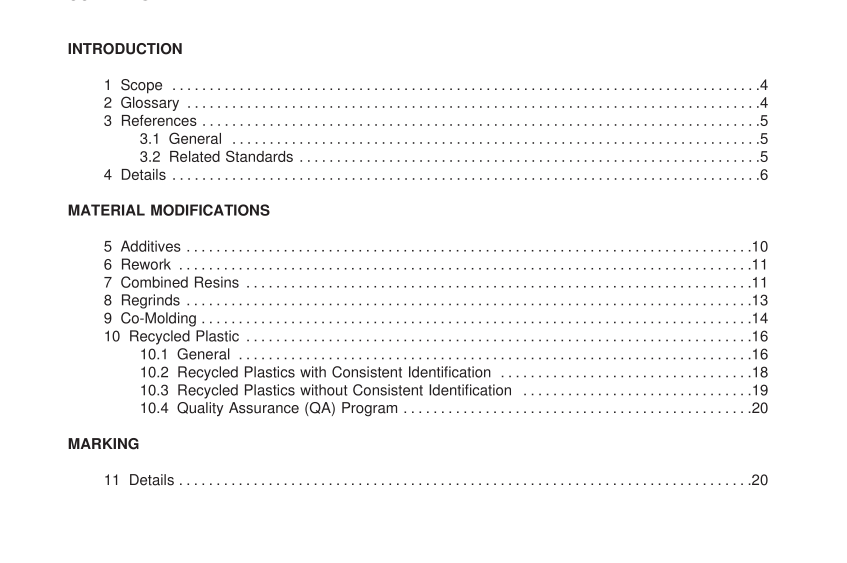UL 746D:2012 free download Polymeric Materials – Fabricated Parts
1 .1 These requirements cover a program applicable to parts that have been molded or fabricated from polymeric material and describe the material-identity control system intended to provide traceability of the material used for the polymeric parts through the handling, molding or fabrication, and shipping operations. Guidelines are also provided for acceptable blending or simple compounding operations that may affect risk of fire, electrical shock, or injury to persons.
1 .2 This program is intended to provide quick verification of material identification by means of an identification marking on the part, or on the carton in which the part is shipped, or in a specification sheet placed within the shipping carton with the part. This program is intended to eliminate the uncertainty of the polymeric material identity in the end-use product and to reduce the possibility of field problems caused by the use of incorrect compounds.
1 .3 The polymeric-material identity program covered by this standard is intended to provide traceability for molded finished parts (that is, enclosures, internal equipment parts, and the like) that are to be factory-installed components of other equipment where the acceptability of the combination is to be determined.
1 .4 This program is not intended for manufacturing operations that add colorants or other additives to plastic materials using hot-compounding techniques that subject the material to an additional heat history and ship pellets as finished parts. This program is not intended to provide traceability for polymeric materials that are intended for field installation.
1 .5 Requirements and methods for the evaluation of metallized or painted parts are contained in the Standard for Polymeric Materials – Use in Electrical Equipment Evaluations, UL 746C, and the requirements for Polymeric Materials – Short Term Property Evaluations, UL 746A. Reference should be made to the applicable individual product standard for performance requirements covering the part or assembly.
2 Glossary
2.1 For the purposes of this Standard the following definitions apply.
2.2 CO-MOLDING – The process of injecting or extruding two or more materials into a single mold using two or more plasticizing cylinders or through a single dye being fed by separate extruders either simultaneously or in sequence.
2.3 FABRICATOR – Performs such finishing operations as machining, drilling, painting, plating, assembly, hot stamping, and the like.
2.4 GENERICALLY – SIMILAR MATERIALS – Materials having the same basic chemical constituents and structure but differing in the amounts of fillers, modifiers, and/or reinforcements.
2.5 LET-DOWN RATIO – The proportion by weight of additive or concentrate to the base resin material. The maximum let-down ratio is the highest permissible proportion by weight of the additive or concentrate to the base resin material. The minimum let-down ratio is the lowest permissible proportion by weight of the additive or concentrate to the base resin material. 2.6 MOLDER – Performs injection, extrusion, transfer, compression, rotational, co-molding, thermoforming, reaction injection molding, pultrusion, open mold or hand lay-up processes.
UL 746D:2012 free download
